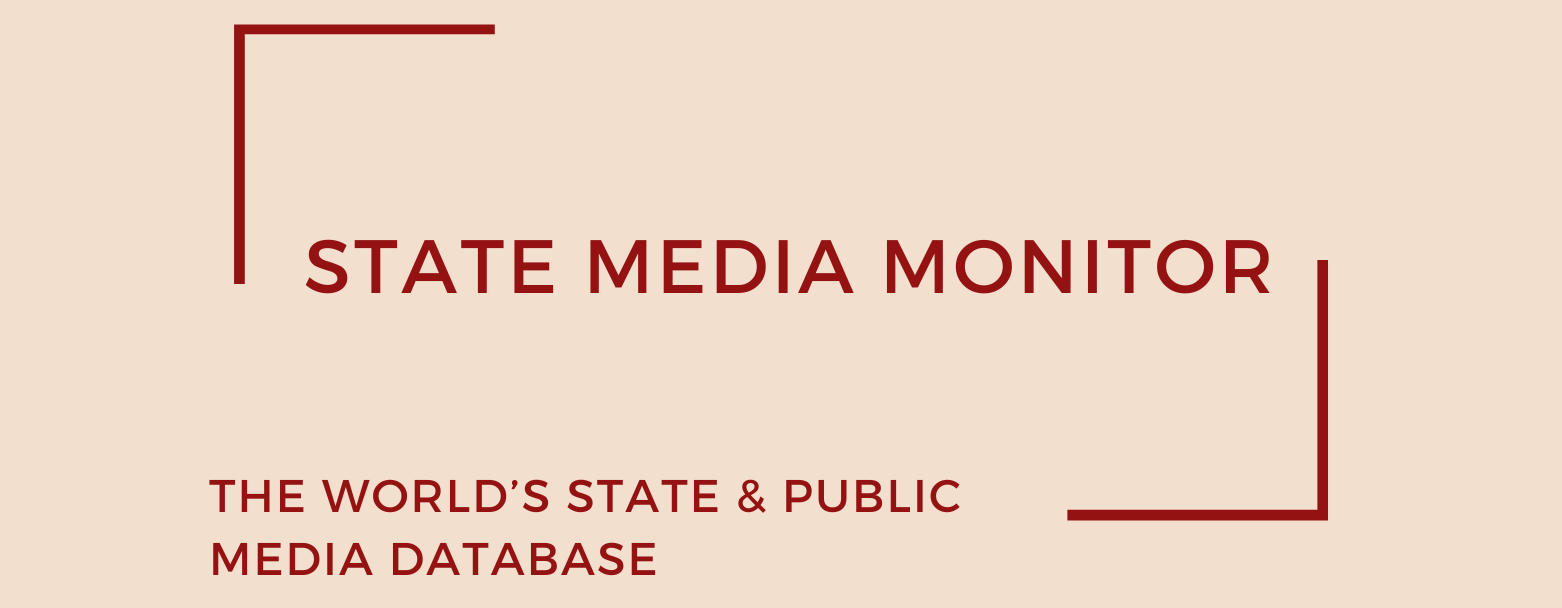Société nationale de radiodiffusion et de télévision (SNRT)
SNRT is Morocco’s national public broadcasting corporation, formerly known as Radiodiffusion Télévision Marocaine (RTM). It operates a diversified portfolio of eight national television channels, four thematic radio stations, and a network of regional radio channels, offering a wide range of cultural, news, entertainment, and educational programming. In 2024, SNRT launched Forja, a free streaming platform hosting over 4,000 hours of Moroccan-produced films, series, cartoons, and documentaries in Arabic and French.
In our State Media Monitor database, the profile of station 2M will be integrated under SNRT once the creation of the new state-run media holding is completed.
Media assets
Television: Al Aoula, Laayoune TV, Arryadia, Athaqafia, Al Maghribia, Assadissa, Aflam TV, Tamazight TV, 2M, Medi1 TV
Radio: Al Idaa Al Watania, Chaine Inter, Al Idaa Al Amazighia, Radio Mohammed VI du Saint Quran; Regional radio stations: Radio Agadir, Radio Al Hoceima, Radio Casablanca, Radio Dakhla, Radio Fez, Radio Laayoune, Radio Marrakech, Radio Meknes, Radio Oujda, Radio Tangier, Radio Tetouan
State Media Matrix Typology
Ownership and governance
SNRT is fully owned by the Moroccan state and operates under the authority of the Ministry of Youth, Culture and Communication, in accordance with the 2005 Law on Audiovisual Communication. The organization’s governance structure is headed by a 12-member Administrative Council, ten of whom are appointed by various government ministries. The remaining two are elected by SNRT staff.
The highest executive authority within SNRT is the Président Directeur Général (PDG), who is appointed by the minister of communication with the approval of the King—a process that underscores the broadcaster’s strategic and symbolic importance to the state.
SNRT is led by Faïçal Laraïchi, appointed as Président‑Directeur Général (PDG). His leadership was reaffirmed in early 2025.
Over the past four years, SNRT has been at the heart of the Moroccan government’s project to consolidate its state media assets into a powerful public broadcasting group. As part of this strategy, SNRT has been acquiring majority control of 2M and Medi1TV, along with Medi1 Radio. These acquisitions were officially authorized through a decree issued in February 2024, marking a significant shift in the country’s media landscape. According to information from the Ministry of Youth, Culture and Communication, Medi1TV is being repositioned as a 24/7 news channel specializing in live broadcasting.
In January 2025, SNRT finalized two major acquisitions: becoming the sole owner of 2M and Medi1 TV, and securing an 83.6 % stake in Medi1 Radio. This marks the most significant consolidation of Morocco’s public media to date, integrating approximately 4,500 employees across all outlets into the SNRT-led public holding by mid‑2025. The full integration of 2M under the SNRT umbrella is expected to take effect upon the formal creation of the new public media holding structure, anticipated by late 2025.
Source of funding and budget
SNRT’s operations are funded through a mix of public subsidies, commercial advertising revenue, and a special levy known as the Tax for Promotion of the National Audiovisual Space (TPPAN). In 2019, SNRT had a total operating budget of MAD 1.6 billion (approx. USD 181 million), with nearly two-thirds of that amount sourced from direct state subsidies. In 2020, the budget remained largely consistent, including MAD 1.1 billion in state subsidies, MAD 260 million from the TPPAN and MAD 120 million from the FPPAAEP (a state-managed fund for the promotion of audiovisual activities).
The 2025 Finance Law allocated MAD 1.9 billion (~USD 180 million) to public media, including SNRT, for the 2023–24 period.
Editorial independence
While SNRT’s transition from RTM was originally framed as a step toward creating a more autonomous public service broadcaster, in practice, little has changed in terms of editorial freedom. SNRT remains widely perceived as a mouthpiece for the government, avoiding any criticism of state authorities or controversial political actors.
This lack of independence stems not only from direct political control, but also from a pervasive climate of self-censorship—a hallmark of Morocco’s broader media ecosystem. Legal threats, regulatory pressure, and informal warnings remain commonplace, discouraging both public and private media outlets from pushing editorial boundaries. As a result, even when political circumstances allow for slightly greater openness, SNRT journalists often err on the side of caution to avoid potential reprisals.
While SNRT maintains an ethical charter and an internal rulebook, these instruments offer no substantive guarantees of editorial independence. The broadcaster does have an internal mediator’s office, tasked with managing audience complaints. The mediator is appointed by and reports directly to the PDG, and is mandated to compile an annual report based on feedback and inquiries directed at program producers. However, the mediator’s capacity to act as an independent ombudsman remains limited, given their institutional subordination.
July 2025
Citation (cite the article/profile as part of):
Dragomir, M. (2025). State Media Monitor Global Dataset 2025.
Media and Journalism Research Center (MJRC).
Zenodo.
https://doi.org/10.5281/zenodo.17219015
This article/profile is part of the State Media Monitor Global Dataset 2025, a continuously updated dataset published by the Media and Journalism Research Center (MJRC).
